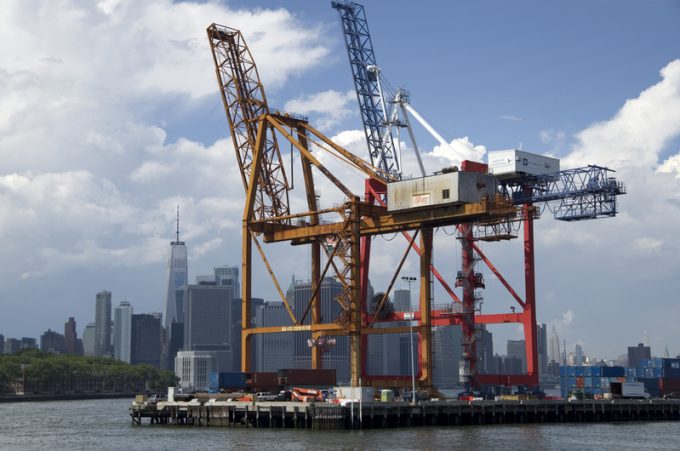Freight rates will stay high next year – no respite for shippers, predicts Drewry
Some three million teu of new tonnage arriving next year will most likely be “more ...
GM: RAISING THE ROOF GGM: IN FULL THROTTLE GZIM: MAERSK BOOST KNIN: READ-ACROSSMAERSK: NOT ENOUGHMAERSK: GUIDANCE UPGRADEZIM: ROLLERCOASTERCAT: HEAVY DUTYMAERSK: CATCHING UP PG: DESTOCKING PATTERNSPG: HEALTH CHECKWTC: THE FALLGXO: DEFENSIVE FWRD: RALLYING ON TAKEOVER TALKODFL: STEADY YIELDVW: NEW MODEL NEEDEDWTC: TAKING PROFIT
GM: RAISING THE ROOF GGM: IN FULL THROTTLE GZIM: MAERSK BOOST KNIN: READ-ACROSSMAERSK: NOT ENOUGHMAERSK: GUIDANCE UPGRADEZIM: ROLLERCOASTERCAT: HEAVY DUTYMAERSK: CATCHING UP PG: DESTOCKING PATTERNSPG: HEALTH CHECKWTC: THE FALLGXO: DEFENSIVE FWRD: RALLYING ON TAKEOVER TALKODFL: STEADY YIELDVW: NEW MODEL NEEDEDWTC: TAKING PROFIT

The 2M alliance partners today announced two more blank sailings from Asia to the US Gulf, seeing “further reduction in demand” on the route.
The 5,048 teu MSC Nerissa deployed on the 2M’s TP88/Pelican Asia-USEC loop, on which Zim is also a vessel provider and which it dubs ZGX, will be held in China next week, as will the panamax 5,048 teu MSC Ans in week 20.
According to eeSea data, the proforma capacity for the loop is between 18,500 teu and 23,000 teu a month.
The loop turns on calls at Mobile, Tampa and Houston in the US where the MSC Nerissa was scheduled to arrive on 31 May.
According to Blue Alpha Capital’s first-quarter port throughput data of the top 10 US container ports, last month Houston saw a 19.4% decline in import containers, compared with the same month last year, to 88,302 teu, and a 2.9% quarter-on-quarter reduction to 293,272 teu.
Overall import volumes for the US east coast ports fell by 11.6% in March, to 688,869 teu, according to the data, and was down by 3.1% for the first quarter at 2,251,459 teu.
The sudden drop in demand led the port of Virginia to close one of its three container terminals last week.
The strongest performer on the east coast was New York/New Jersey, which recorded a modest 1.3% fall in throughput last month to 279,358 teu, overtaking Los Angeles as the largest US container port for imports that month, and its Q1 figure was virtually unchanged on 2019 with imports of 902,903 teu.
Total imports through west coast ports slumped 17.7% in March to 605,895 teu, and by 12.9% over the first quarter, to 2,195,181 teu.
“The west coast ports have a higher concentration of Chinese imports,” noted Blue Alpha Capital founder John McCown.
Indeed, Los Angeles saw import volumes collapse by 25.9% last month, to 220,225 teu, reducing its throughput performance in the first quarter by 15.8% on the previous year, to 905,011 teu.
“What started as supply-related disruption in China has now grown into demand- and supply-related disruption across the world, said Mr McCown.
“The impact on inbound container volumes into the US this month will be mitigated by a backlog of containers moving out of China in March. However, the underlying trends are negative, and we will see larger declines driven by the health crisis,” he said.
Mr McCown added that it would be “a mistake to ascribe all the declines we will see in container volumes as temporary and reversible”.
He warned: “In my view, there will be neither a v-shaped or u-shaped recovery in container volumes. This crisis will result in structural changes, leading to permanent change.”
He argued that, even when the health crisis was over and if US tariffs on Chinese imports were “to go away”, it was unlikely that container volumes would recover.
“The globalisation of components and parts across industries has resulted in making companies more aware of the risks from unanticipated events like tariffs and viruses. This will likely result in changes that impact container volumes.”
Comment on this article